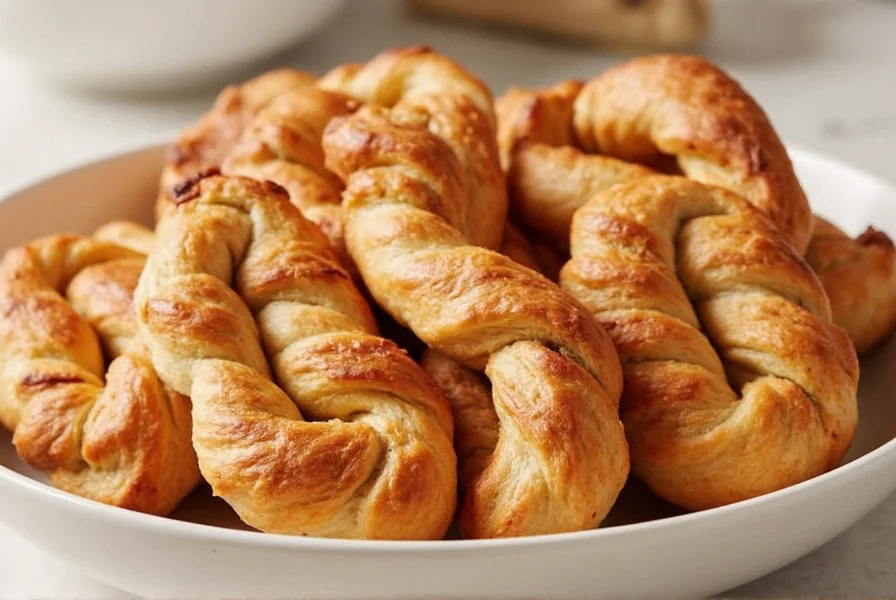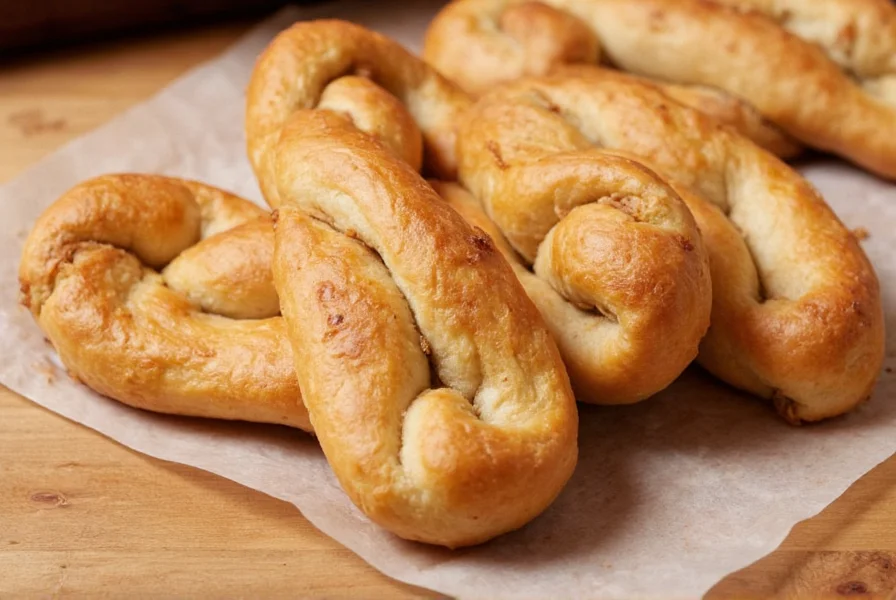Creating exceptional cinnamon bread twists requires understanding the balance between dough texture, filling ratio, and baking technique. These popular pastries combine the comforting flavors of cinnamon rolls with the convenience of individual bread portions. Whether you're a beginner baker or experienced in the kitchen, mastering this recipe involves attention to ingredient quality, proper dough handling, and precise baking times.
Essential Ingredients for Perfect Cinnamon Bread Twists
The foundation of outstanding cinnamon bread twists begins with quality ingredients. While many recipes exist, the following components create the ideal balance of flavor and texture:
| Ingredient | Quantity | Key Purpose |
|---|---|---|
| All-purpose flour | 3½-4 cups | Provides structure while maintaining softness |
| Active dry yeast | 2¼ teaspoons | Creates proper rise and airy texture |
| Whole milk | 1 cup, warm | Enhances richness and tenderness |
| Unsalted butter | ⅓ cup, softened | Adds flavor and creates flaky layers |
| Brown sugar | ½ cup, packed | Provides caramel notes in the filling |
| Cinnamon | 2 tablespoons | Creates signature flavor and aroma |
Step-by-Step Preparation Guide
Follow these professional techniques to create bakery-quality cinnamon bread twists at home. The process takes approximately 3 hours from start to finish, including rising time.
Dough Preparation
Begin by activating your yeast in warm milk (110°F) with a teaspoon of sugar. After 5-10 minutes, when the mixture becomes foamy, combine it with flour, softened butter, eggs, and salt. Knead the dough until smooth and elastic, about 8-10 minutes by hand or 5-7 minutes using a stand mixer with dough hook. The dough should pass the "windowpane test"—when stretched thin, it should become translucent without tearing.
Filling Application and Shaping
Roll the risen dough into a 16x12 inch rectangle. Spread softened butter evenly over the surface, then sprinkle with the cinnamon-sugar mixture (combine ½ cup brown sugar and 2 tablespoons cinnamon). Starting from the long edge, tightly roll the dough into a log. Cut the log into 12 equal pieces, then gently stretch each piece and twist into shape.
Pro tip: For cleaner cuts without squishing the swirls, use unflavored dental floss or a sharp serrated knife. Place twists on parchment-lined baking sheets, leaving 2 inches between each for proper expansion during baking.
Common Mistakes to Avoid
Many home bakers encounter issues with their cinnamon bread twists. Understanding these pitfalls ensures better results:
- Overfilling with cinnamon sugar: Excess filling creates leakage during baking, resulting in burnt spots and structural issues
- Incorrect dough temperature: Cold dough resists rolling and creates uneven layers; overly warm dough becomes difficult to handle
- Under-proofing: Insufficient rising time produces dense, chewy twists rather than light, airy pastries
- Overbaking: Even 2-3 minutes too long dries out the delicate crumb structure
Creative Variations for Cinnamon Bread Twists
Once you've mastered the basic recipe, experiment with these popular variations that appeal to different taste preferences:
- Cheesecake swirl: Add a thin layer of cream cheese filling beneath the cinnamon sugar for a cinnamon roll bread twists with cheesecake element
- Apple cinnamon: Incorporate finely diced apples into the filling for seasonal flavor
- Gluten-free version: Use quality gluten-free flour blend with xanthan gum for those with dietary restrictions
- Whole wheat option: Substitute up to 50% of the all-purpose flour with whole wheat for added nutrition

Storage and Serving Recommendations
For optimal freshness, consume cinnamon bread twists within 24 hours of baking. Store leftovers in an airtight container at room temperature. Avoid refrigeration, which accelerates staling. To refresh day-old twists, warm in a 300°F oven for 5-7 minutes.
The ideal serving temperature is slightly warm—not hot—which allows the cinnamon aroma to fully develop while maintaining structural integrity. Pair with coffee, tea, or cold milk for breakfast, or serve as an afternoon treat with a scoop of vanilla ice cream for dessert.
Troubleshooting Guide
Encountering issues with your homemade cinnamon bread twists? These solutions address common problems:
- Dense texture: Usually indicates under-proofed dough or too much flour. Ensure proper rising time (dough should double) and measure flour correctly using the spoon-and-level method
- Filling leakage: Apply filling evenly without overloading, and seal the dough roll's edge well before cutting
- Pale color: Oven temperature may be inaccurate—use an oven thermometer to verify. Consider extending baking time by 2-3 minutes
- Dry crumb: Overbaking or excessive flour usage. Check for doneness at minimum recommended time and measure flour carefully
Frequently Asked Questions
How do I prevent my cinnamon bread twists from becoming dry?
To maintain moisture in cinnamon bread twists, avoid overbaking and measure flour accurately using the spoon-and-level method. Adding an extra tablespoon of milk to the dough can enhance moisture retention. Proper storage in an airtight container at room temperature preserves freshness for up to 48 hours.
Can I prepare cinnamon bread twists ahead of time?
Yes, you can prepare cinnamon bread twists in advance. After shaping, place them on baking sheets, cover tightly, and refrigerate overnight. The next morning, allow 1-2 hours for the dough to come to room temperature and complete rising before baking. Alternatively, freeze shaped twists on baking sheets, then transfer to freezer bags for up to 3 months. Bake from frozen, adding 5-7 minutes to baking time.
What's the ideal cinnamon to sugar ratio for the filling?
The perfect cinnamon sugar ratio for bread twists is 2 tablespoons cinnamon to ½ cup brown sugar. This creates robust cinnamon flavor without overwhelming bitterness. For milder flavor, reduce to 1½ tablespoons cinnamon. Using brown sugar instead of white adds caramel notes that complement the cinnamon beautifully.
Why do my cinnamon bread twists lose their shape during baking?
Shape loss typically occurs when dough hasn't properly proofed or when twists aren't sealed well. Ensure dough has doubled in size before baking, and pinch the ends of each twist firmly to secure them. Using dental floss instead of a knife for cutting creates cleaner separation that maintains shape better during baking.
Can I make vegan cinnamon bread twists?
Absolutely. Substitute dairy milk with unsweetened almond or soy milk, replace butter with vegan butter or coconut oil, and use flax eggs (1 tablespoon ground flaxseed mixed with 3 tablespoons water per egg). The resulting vegan cinnamon bread twists maintain excellent texture and flavor while accommodating dietary preferences.











 浙公网安备
33010002000092号
浙公网安备
33010002000092号 浙B2-20120091-4
浙B2-20120091-4